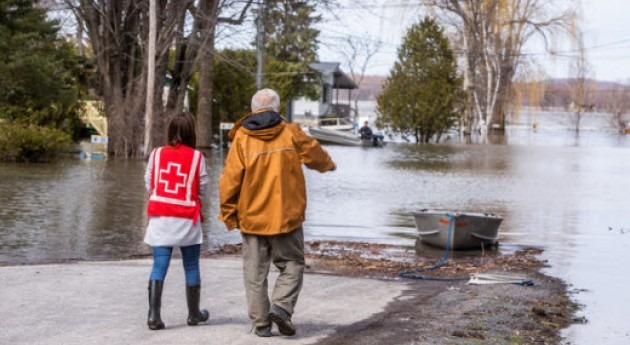The spring flooding that took place in late April and May across Ontario, Quebec and New Brunswick caused close to $208 million in insured damage, according to Catastrophe Indices and Quantification (CatIQ) Inc. The most common cause of damage was overflowing rivers, which led to road and basement flooding, submerged vehicles and shifted home foundations. Heavy rain also caused roof leaks and sewer backups. Insured damage is estimated at $74 million in Ontario, $127 million in Quebec and $6 million in New Brunswick.
Before the floods, water levels across the affected regions were already high due to the earlier heavy rains and snowmelt. The threat of more heavy rainfall and snowmelt prompted flood warnings and watches across Ontario, Quebec and New Brunswick.
| Type of policy | Insured Damage |
| Home insurance | Nearly $160 million |
| Business insurance | Nearly $40 million |
| Auto insurance | Over $10 million |
Calling for a National Flood Action Plan
As the financial cost of a changing climate rises and as Canadians head to a federal election, Insurance Bureau of Canada (IBC) is advocating that all political parties in the upcoming federal election commit to a National Action Plan on Flooding. This Action Plan would prioritize citizen awareness and education on the risk of flooding, relocating and protecting those at the greatest risk of repeated flooding, developing high-risk insurance mechanisms for those residents remaining in high risk areas and denying disaster assistance to new buildings in floodplains.
Crucial to all of this is increased investment from the federal government in mitigating the future impacts of extreme weather and building resilience to its damaging effects.
IBC reminds Canadians that it is not only insurers who foot the bill for severe weather damage. For every dollar paid out in insurance claims for homes and businesses, Canadian governments and their taxpayers pay out much more to recover public infrastructure damaged by severe weather.
Spring Flooding In Review
The first round of rain in southern and north-central Ontario fell late on April 17. The rain spread eastward through the night, reaching Quebec and New Brunswick the next day. On April 18, another round of rain moved through southern and north-central Ontario and southern Quebec, intensifying in New Brunswick and lasting until the morning of April 20. Reported rainfall amounts ranged from 35 mm to 60 mm. Strong wind gusts also occurred on April 18 in southern Quebec, with speeds ranging from 90 km/h to 100 km/h. Rain was followed on April 18 to 20 by daily high temperatures in Quebec City that melted 20 cm of the snowpack. The snowpack in north-central Ontario was reduced to trace amounts by April 20. From Ontario to New Brunswick, warm temperatures and light rain persisted until April 24.
On the evening of April 30, a warm front brought more rain to southern Ontario. The rain continued to spread north and east through the morning of May 1. The rain had ended in Ontario by that evening, and in Quebec and New Brunswick early on May 2. After a generally dry period from May 3 to 8, rain began in central Ontario on May 9 and spread into eastern Ontario and southern Quebec by late morning.
These various conditions have resulted in a significant number of flooded homes. As a result, many residents had to be evacuated for a period of time:
| Province | Homes flooded* |
| Ontario | 2,000 |
| Québec | 9,800 |
| New Brunswick | 6,800 |
* initial estimates
The amount of insured damage is an estimate provided by CatIQ Inc. (www.catiq.com) under licence to IBC.
Visit IBC’s website for information on how to prepare for a disaster and ways to prevent flood damage to your home.
Craig Stewart, Vice President, Federal Affairs said: “The widespread flooding this spring affected thousands of Canadians in eastern Canada. Whether it be from floods, wildfires or windstorms, the financial risk of climate change is escalating. Any political party that aims to lead Canada into the next decade should lay out explicit measures to protect Canadians from these current threats. Any climate plan without adaptation is only half a plan.”



